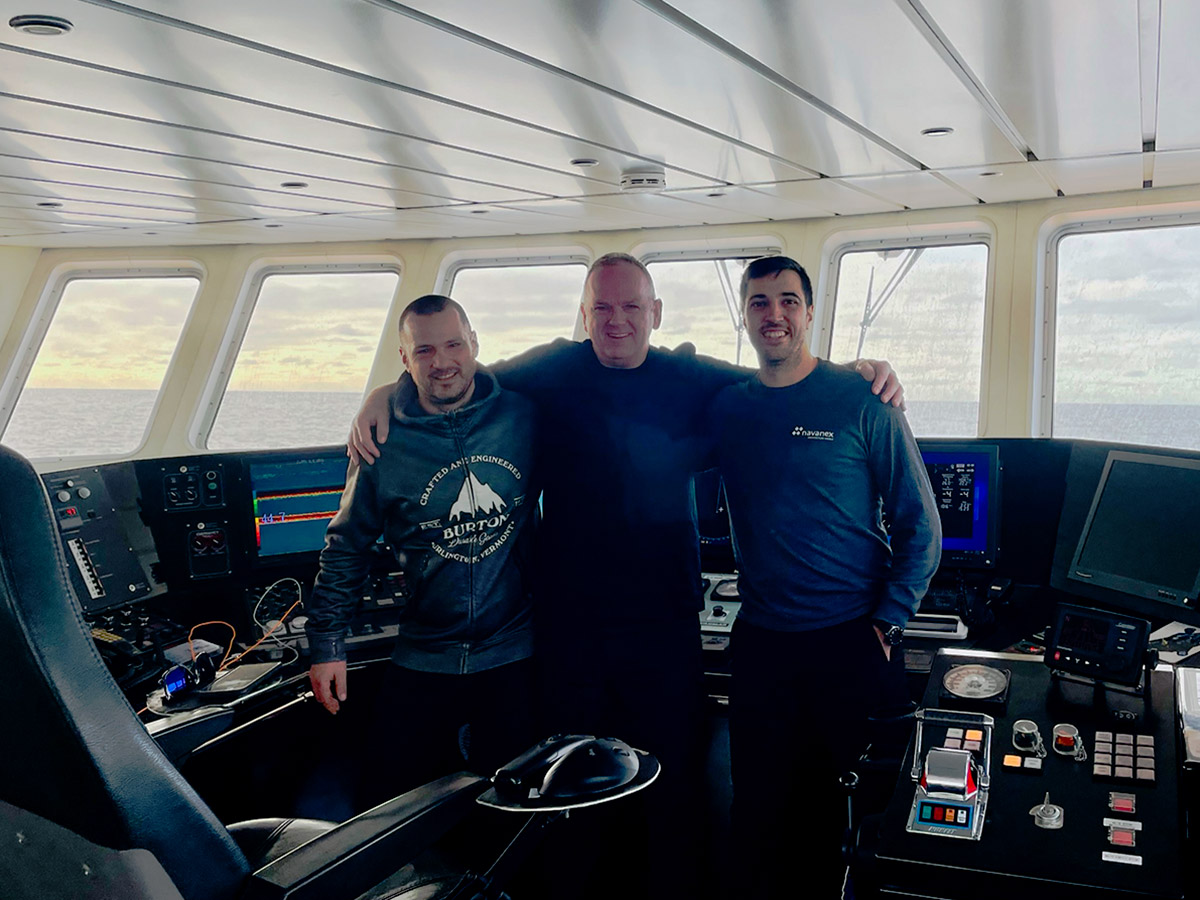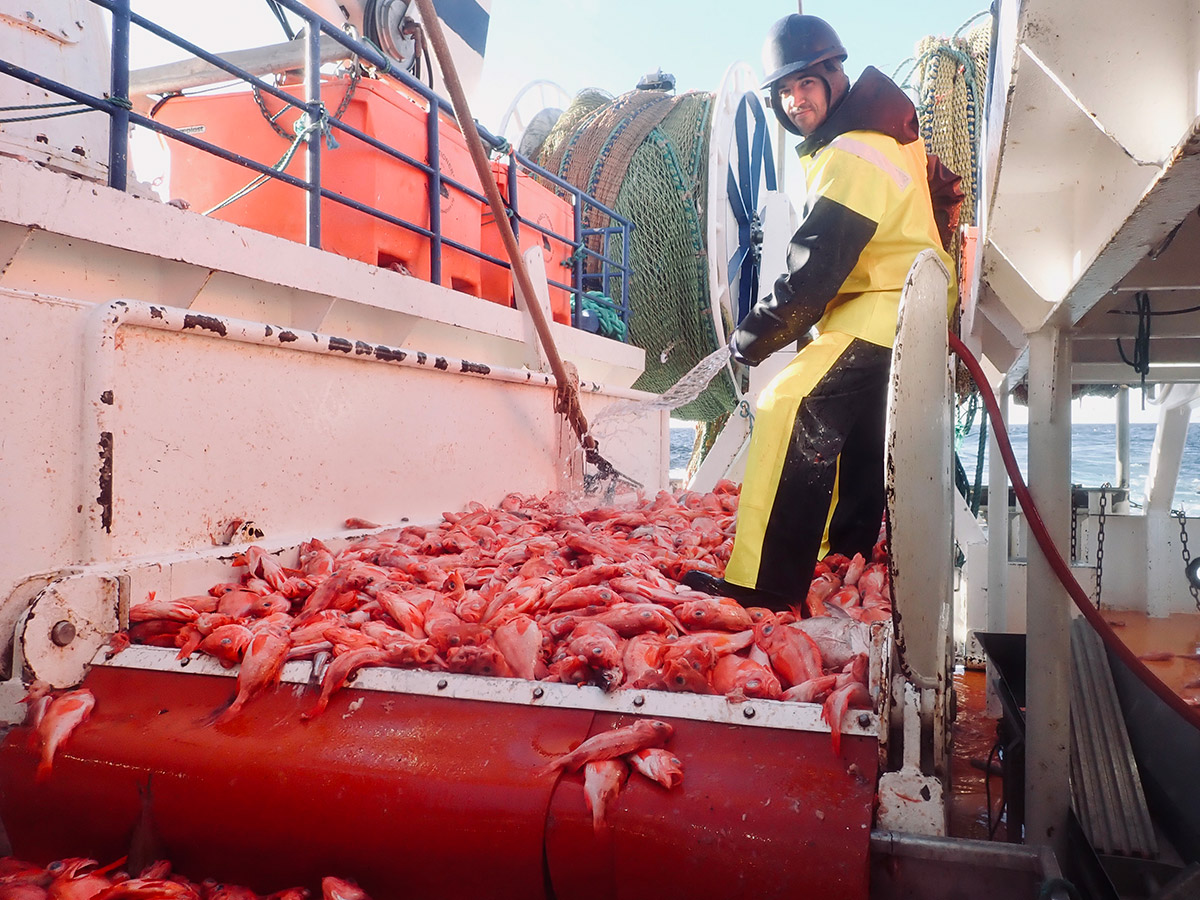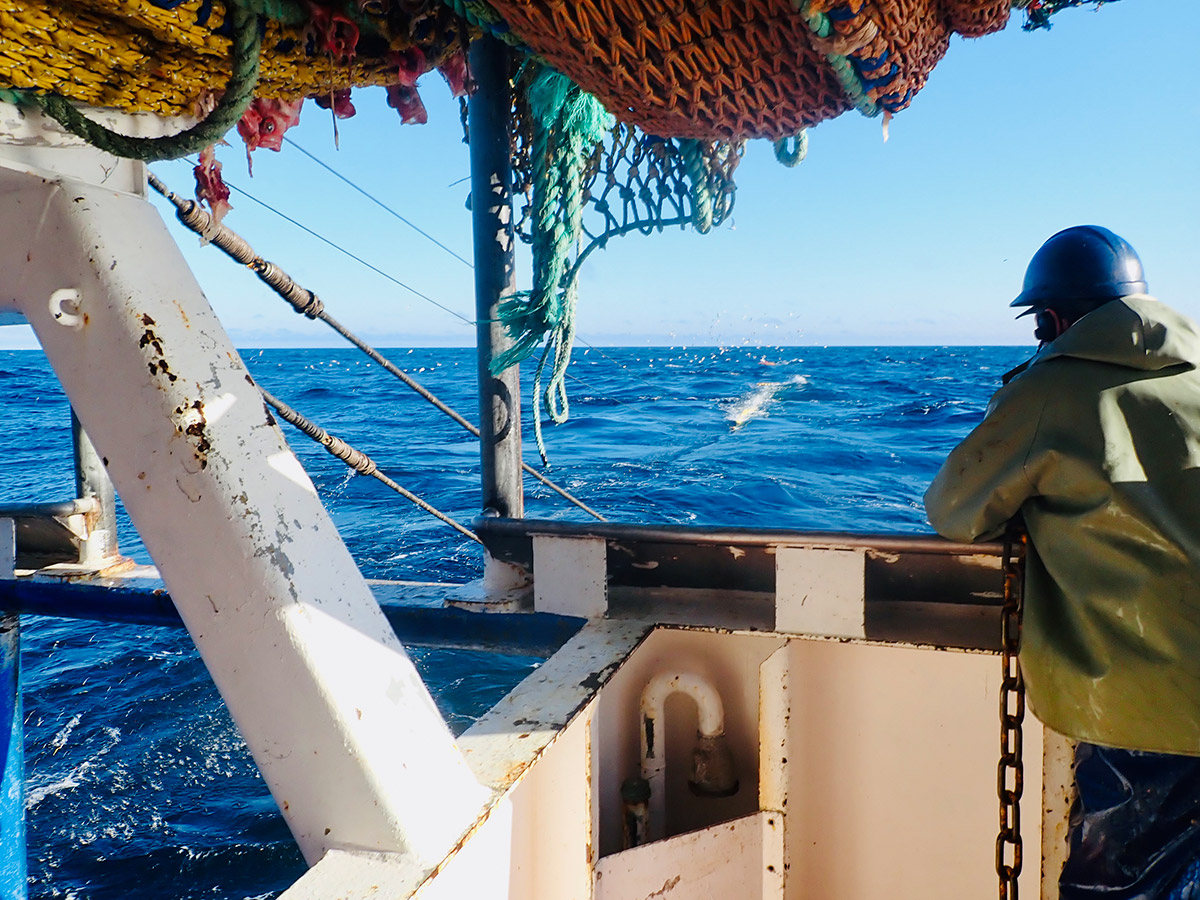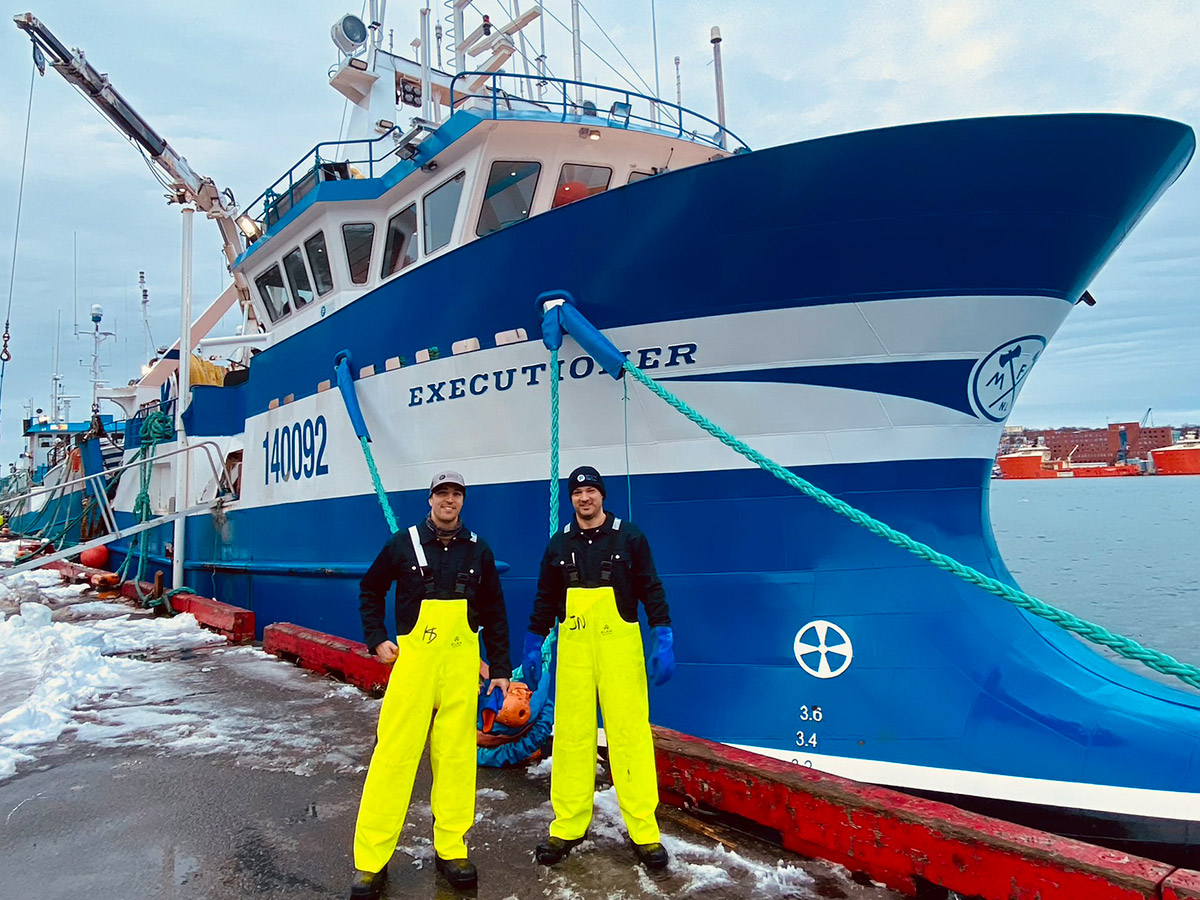07 Jun Two Navanex engineers become fishermen
Navanex engineers and naval technologists Hubert Simard and Jean-Nil Poirier Morissette had the experience of a lifetime last January when they boarded the fishing vessel Executioner to become fishermen for 216 hours.
Having participated in the design of the Executioner in 2016, Hubert and Jean-Nil wanted to ensure that their vessel met all expectations and whether any elements could be improved. In fact, their new customer, captain, and crab boat owner Marco Turbide, is expanding his fleet and has ordered a multi-fishing trawler from Chantier Naval Forillon, to be designed and engineered by Navanex. Depending on the season, this vessel will enable Mr. Turbide to fish for snow crabs and rockfish. This expedition aboard the Executioner enabled the company to gather a wealth of data to propose optimal solutions for the design of this new vessel. The rockfish, which has been under moratorium since 1995, has since recovered enormously and is now found in huge quantities in Unit 1 of the St. Lawrence. Until the moratorium is lifted, this new vessel will be the first modern boat dedicated to the resumption of this fishery.
By becoming full members of the seven sailors’ crew, Hubert and Jean-Nil chose the best way to test their vessel’s concept. But they had better be ready for a great adventure!
An eventful start
Upon arriving in St. John’s, Newfoundland, the two professionals had to wait two days for a major storm to pass through, while awaiting the arrival of another major low-pressure system. So, they had ample time to visit the local fishermen’s favorite pharmacy: the White Rose Pharmacy. It is well known in the area for concocting its own recipe of anti-nausea medication which is said to be the best there is! A wise precaution before embarking on such a journey. Despite this wait, the second storm hit the crew shortly after departure, and Hubert and Jean-Nil experienced a rather eventful fishing baptism.
Life on board
Despite their extensive maritime knowledge, nothing could have prepared the two engineers for life aboard the Executioner. With very limited space, a diet totally devoid of fruit and very little sleep, in three or four-hour shifts, life as a fisherman is tough. The constant noise of the machines, walking on constantly flooded decks, and the extreme physical work were their daily routine for nine days.
An incomparable human and professional experience
Despite these difficulties, Jean-Nil and Hubert are very grateful to have lived such an experience, which they describe as incomparable. The warm welcome they received from the crew, despite a certain language barrier, the generosity of the captain and owner of the Executioner, Dennis McCarthy, who welcomed them as fishermen aboard his ship, despite their lack of experience, were worth their weight in gold. The two engineers worked tirelessly with the crew, waking up at 3 or 4 a.m. to the sound of the loudspeaker summoning them to the deck. Jean-Nil Poirier Morissette, Engineering Manager – Senior Naval Architecture Technologist at Navanex recalls: “A chocolate bar and a soda pop swallowed on the run, and we’d be working for three to four hours, pulling out trawls, sorting thousands of pounds of rockfish and gutting hundreds of fish. The humidity, the constant noise and the perpetual motion of the ship didn’t stop us. In total, we fished for six straight days in the Laurentian Channel. The rest of the time was spent getting to the fishing grounds, and then back to the port of Louisbourg, Nova Scotia”.
In-depth analysis of areas for improvement
The Executioner’s two developers were humble enough to list the improvements they had in mind. “By living and working on board, it’s much easier to see that certain elements of our designs deserve attention, and that gives us a real edge over our competitors. Now we can speak with full knowledge of the facts, and that’s priceless,” emphasizes Hubert Simard, Project Manager – Mechanical Engineer, Naval Architecture Technologist at Navanex. Indeed, during their long hours at sea, the two professionals noted that:
- The environment is extremely noisy: the auxiliary engine that supplies hydraulic power to operate the fishing winches, the main combustion engine and the generators all run simultaneously. Hubert and Jean-Nil have already recommended several solutions to reduce this noise pollution.
- Water constantly flooding the deck: To remedy this situation they are considering more suitable openings to drain the water as well as additional bilge pumping stations such as a double-redundant system to ensure adequate drainage.
- Safety: Although already increased, they have devised ways of reinforcing it with simple solutions that would have been difficult, if not impossible to conceive without this trip.
- The catch’s route from its entry into the trawls to its conservation in the refrigerated holds: this flow could be fine-tuned to save time and enable the crew to gain a few extra hours of rest.
- Shipboard circulation: Several improvements will be included in the design of the new trawler to make it easier for crew members to move from one area to another while staying dry, thus avoiding frequent changes of clothing and boots. Given the uncomfortable environment on board, this kind of improvement will certainly be welcome.
Points identified before the trip
Even before setting off on this incredible journey, Jean-Nil, Hubert and their colleagues at Navanex had already thought about design improvements they wanted to validate:
- Refining the hull to make it more hydrodynamic, reduce drag and increase efficiency with an even higher-performing bulbous bow.
- Recessed stabilizers, a very clever innovation; profiled fins and recess to improve the efficiency of the stabilizers when lowered. What’s more, they offer less resistance. Recessing them will also reduce the risk of breakage.
All these elements have been discussed with captain and owner Dennis McCarthy and will be incorporated into future projects carried out by the Navanex team at Chantier Naval Forillon.
A second hands-on experience
In the fall of 2022, Hubert Simard and Jean-Nil Poirier Morissette had already taken part in a hands-on training course at the Marine Institute of Memorial University of Newfoundland. Organized by the Association des Capitaines-Propriétaires de la Gaspésie (ACPG), the training was aimed at observing the behavior of a new semi-pelagic trawl. A scale model, reacting to currents in the training institute’s glass tank, enabled them to observe that this model offered better protection of the seabed. It will therefore be recommended to their customers, should the need arise.
An all-around advantage
This kind of practical experience enables engineers and technologists to see first-hand the consequences and behavior generated by their concepts. The competitive edge gained by such an approach will reinforce the already well-established credibility of Navanex’s naval architecture experts, who are currently building their 5th large fishing vessel of this type. They have already designed the F/V Dual venture, F/V Executioner, F/V Russell’s legacy and F/V Nathen K.



